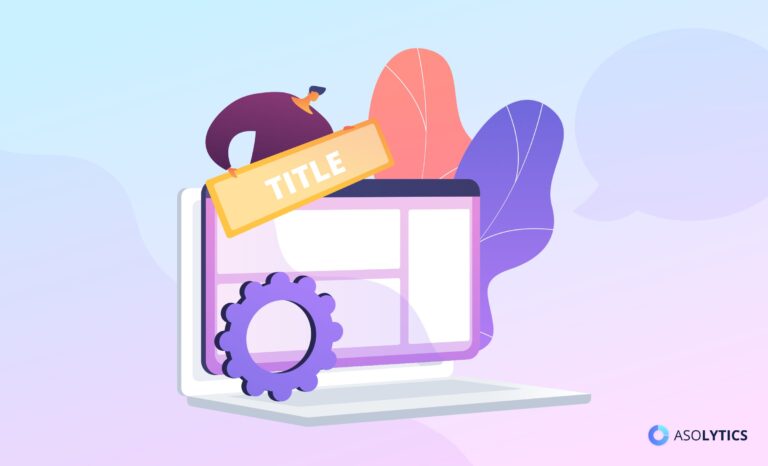The ASO strategy provides both a broad set of optimization methods and unique techniques, depending on the platform’s characteristics on which you place your product. Currently, the App Store and Google Play are the industry giants, where the number of applications is measured in millions, and this number is constantly growing. That is why we focus our attention on the algorithms’ peculiarities and ASO ranking factors of these particular services.
Like the store for Apple devices, Google Play does not publicly disclose all of its ranking mechanisms. However, it regularly makes changes to requirements, about which it informs users. Many patterns have been identified by developers and publishers empirically. In this article, we will share with you information about the main Google Play Store ranking factors and features of working with this platform, as well as the latest changes in the guidelines.
Table of Contents
Factors Google Play Store Ranking Algorithm Considers
In its arsenal, the Android store has many more mechanisms for analyzing and evaluating information that can even index the developers’ email addresses. True, we can hypothetically judge the role and weight of each individual factor and test the effectiveness of optimizing elements through testing and in practice.
The most significant assets for the best Android apps are the following:
- app title;
- localized page;
- ratings and reviews;
- short description;
- long description with keywords;
- installs and uninstalls;
- icons and screenshots;
- backlinks.
These factors have something in common with elements with the most weight of App store pages in many ways. However, the principle of their evaluation by internal tools is somewhat different, and therefore your optimization approach should be different.
How Google Play ASO Ranking Works
The ranking rules on both platforms are similar to a certain extent, but of course, there are important differences to keep in mind when optimizing your page. You can learn about the nuances of the Apple market in our article about Store ranking. As for Google Play optimization tips, read about it below.
Title
Your product title is one of the first things customers see. It should clearly reflect the essence of the game or application and contain the most relevant keyword. As a rule, the title is the name of your item + a keyword. According to the latest platform requirements, now it should not exceed 30 characters.
Please note that recent Google Play policy updates require removing products that use tricks in their names (and other assets) to mislead customers. For example, you cannot utilize caps, insert emoji, and include words and symbols like “top,” “#1”, “download now,” “no ads,” and so on in the title. Apps that imitate names, icons and other elements of major brands (such as Instagram or TikTok) are considered undesirable because inexperienced users may mistakenly download them instead of the item they want.
Short description
In Google Play, unlike the App Store, there are no concepts of a subtitle, keyword fields, and in-app purchases. But on this platform, there is a short description of 80 characters, which allows you to tell a little more about your application, for example, its primary function or purpose. It is indexed, so use it to add keywords.
As with titles, Google Play prohibits the use of words and symbols in short descriptions that can mislead users. When choosing keywords, try to convey the central message of your product first, and not just use the most relevant but not suitable queries to promote the item. It does not contribute to your rise in rankings but can ruin the first impression.
Long description
Another distinctive feature of Google Play is that a description is also indexed, and therefore you should include relevant keywords in the text about your application. The maximum allowable length is 4000 characters. You don’t have to use all of them if your product has little functionality. The optimal size is 2000-2500 characters. Strive to convey the main essence in the first lines, describe the uniqueness of your item, and talk about the essential functions.
When compiling this asset, adhere to the platform’s recommendations regarding keywords. You can repeat the most relevant ones (especially in the first and last sentences) as long as they do not violate the general meaning of the text. Also, keep track of their total number. It is not recommended that the key density exceed 3-5%. Google Play is cracking down on spam. Unlike titles and short descriptions, you can include emojis and use HTML formatting in your description. Structured text creates an excellent first impression; users will be able to quickly skim through it and understand what your product is about.
Reviews and ratings
We have already said that Google Play has a much more extensive data analysis toolkit than App Store. So, you should also pay attention to feedback on this platform since the algorithms of ranking reviews are used here. Try to optimize your response messages. In our blog, you can read more about ASO reviews. Use keywords, but only in such a way that they fit organically into the text and do not interfere with solving customer problems. It will help you get additional indexing.
Keep in mind that this platform offers users the feature to sort Google Play apps by rating. Ratings and reviews are so-called off-metadata that you cannot directly influence. However, you can improve your ratings to get into the top by carefully managing user feedback, optimizing other metadata to closely match your application, and working through bugs and glitches.
Installations and removals
User actions are always taken into account when ranking. The overall install rate is important, so you should try to attract as many customers as possible from different sources. Google Play also takes into account the first opening of the application, the overall frequency of openings, and the length of each session. Those users who regularly use your product have a better influence on your position than those who simply install it on their device and do not remove it. Unlike App Store, a large number of uninstallations on this platform can negatively affect your state, so it is crucial not only to attract users but also to retain them with a quality service.
Visuals
You can quickly capture customers ‘ attention with listing visuals, such as icons, screenshots, and promotional videos. According to current guidelines, they should give a clear idea of what the game or application is about, be informative, and, as in the case of the title, not deceive users by drawing their attention with flashy nonsensical phrases. By the way, some studies confirm that Google Play indexes even texts in screenshots.
Backlinks
This point is another significant difference between Google Play and App Store. This platform considers external links from other sources to your application page when ranking. It means that in addition to the ASO strategy, you should, of course, use quality SEO methods as well. Although backlinks are not the most important app ranking Android factors, they are helpful nonetheless. So you can attract more users, which means you can raise the rating of your product.

Features of Google Play ASO
The big advantage of this platform is that if you want to make adjustments to your metadata, you don’t have to update the product itself. You can rewrite the description text or replace the screenshots at any time. The main thing to remember is that since the Google Play artificial intelligence analyzes huge amounts of data, indexation time can be quite long. Most likely, you will notice the impact of the changes made in one to two weeks. To speed up this process a bit, you can use the proprietary Google Ads service. By the way, app updates themselves don’t carry as much weight as they do in App Store.
Using machine learning, Google analyzes user behavior. It means that it remembers what they download, what they look for, and what they browse. That is why the search results are different for each person (even for different devices). Although the difference may be small, on average, 2-3 positions, it is still there. On App Store, the search result is always the same.
When working on assets, be sure to take into account the current Google Play Store search optimization trends and guidelines. For example, if you are just about to publish your application, it is vital to choose the right time to do so. Practice shows that the number of downloads increases dramatically on weekends, especially from the game and entertainment category. Therefore, the best strategy is to start advertising any day from Monday to Thursday. There is also an increase in application downloads from November to January because, during the Christmas holidays, people often give each other gadgets and various devices.
Influence Algorithms With ASO Ranking Factors
Google Play uses a huge variety of algorithms to analyze information on application pages and takes into account various factors. It gives you more tools than App Store to optimize your data and get your product to the top. Proper design, combination, and testing of elements will positively affect your product visibility and increase installs.
Be sure to follow the news from the company and follow the latest official recommendations. If any asset violates them, you risk being removed from Google Play. Regularly review your ASO and SEO strategy and develop and test new methods of influencing the store’s internal algorithms. We hope that after reading this article, you will understand the platform’s features and be able to develop an effective strategy. However, don’t get hung up on one concept; you need to change it regularly throughout your product’s life cycle.




